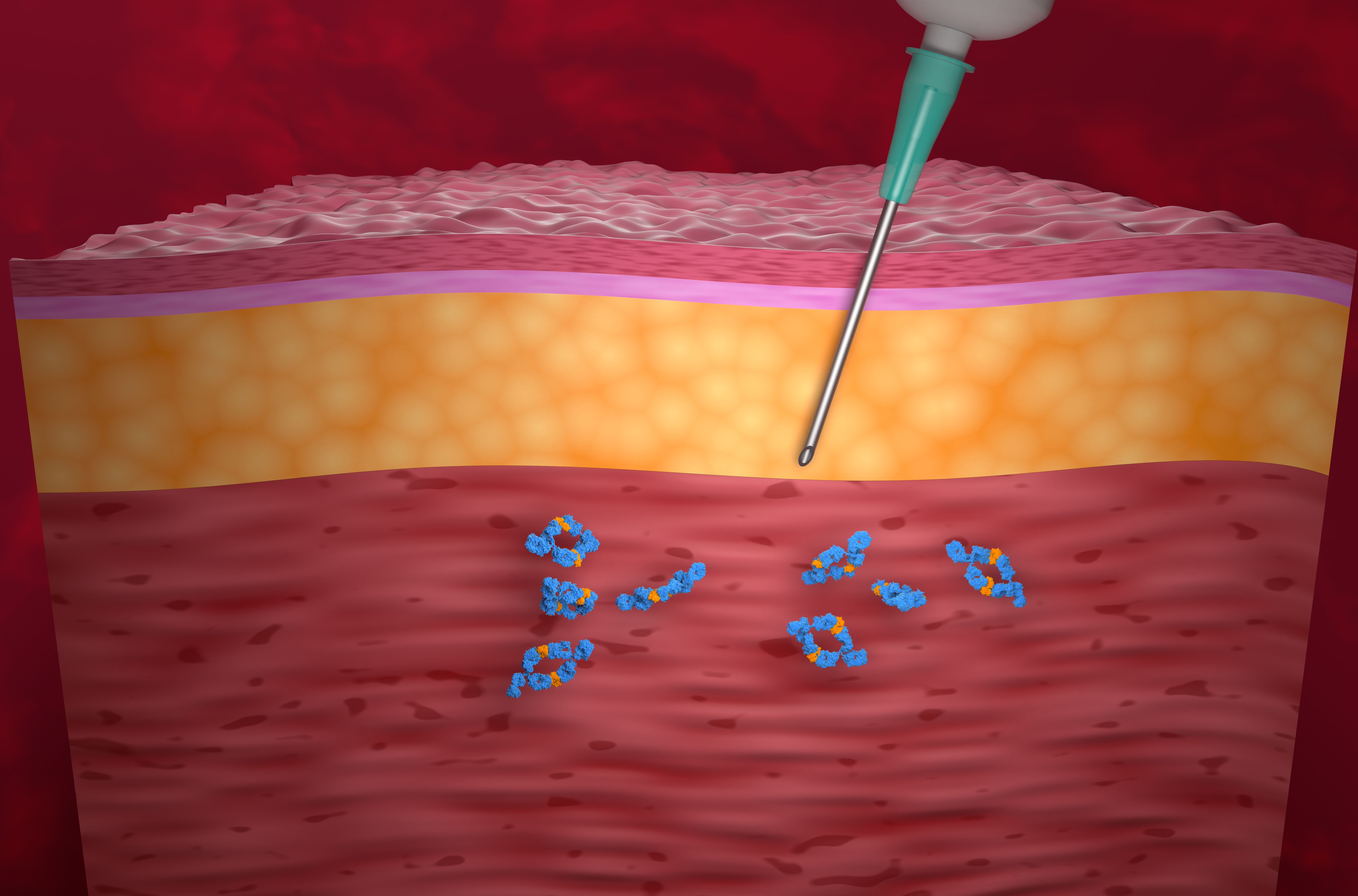- Bone Health
- Immunology
- Hematology
- Respiratory
- Dermatology
- Diabetes
- Gastroenterology
- Neurology
- Oncology
- Ophthalmology
- Rare Disease
- Rheumatology
Biosimilars Improve Access to Biologic Therapies, JAK Inhibitors for Patients With RMDs
A 10-year analysis in Poland found that the introduction of biosimilar drugs significantly increased access to biologic therapies and Janus kinase (JAK) inhibitors for patients with rheumatic musculoskeletal diseases (RMDs), while also reducing treatment costs.
Adalimumab IV treatment | Image Credit: LASZLO - stock.adobe.com

A retrospective analysis in Poland found significant increases in access to biologic disease-modifying antirheumatic drugs (bDMARDs) and janus kinase inhibitors (JAKis) in higher-priced innovative drugs instead of cheaper tumor necrosis factor inhibitors (TNFis) among patients with rheumatic musculoskeletal diseases (RMDs) over a 10-year time period.
A public payer database collected research on biological treatments and synthetic drugs during the biosimilar market competition period in RMDs from 2013 up until 2022. In total, 22,104 patients with RMDs were treated with either adalimumab (ADA), etanercept (ETN), infliximab (INF), certolizumab (CZP), golimumab (GOL), rituximab (RTX), tocilizumab (TCZ), secukinumab (SEC), ixekizumab (IXE), tofacitinib (TOF), baricitinib (BAR), and upadacitinib (UPA). The TCZ patient data includes intravenous (IV) and subcutaneous (SC) options.
Each drug was categorized based on the mechanism of action it had on either rheumatoid arthritis (RA), psoriatic arthritis (PsA), or axial spondylarthritis (axSpA) patients. Medications were deciphered as TNFi, interleukin (IL)-6 inhibitors, anti-CD20, IL-17 inhibitors, and JAKis. Subgroups were divided into less costly TNFi and other TNFi.
The results of patients with RMDs and treatment access in Poland increased notably from introduction, following the 10-year study period. Between 2013 and 2022, 16,979 more patients received treatment with bDMARDs or JAKis (RA, n = 8,239; PsA; 3,696; axSpA, n = 5,044). The overall percentage of patients with access to bDMARDS and JAKis increased from 0.8% to 3.2% for RA, 1.4% to 8.7% for PsA, and 0.8% to 3.5% for axSpA.
The peak value of cost treatment was reached in 2018 but decreased for the following 3 years. In 2018, approximately €31 million in cost savings were accumulated; however, it took from 2019 to 2021 for the same amount to accumulate again. The largest decrease in the average cost of therapy occurred in 2019, the same year as the first ADA biosimilars reimbursements. These calculations remained consistent throughout 2020, but increased in 2021 and 2022, when the number of patients treated with bDMARDs or JAKis increased overall.
The 3 largest increases in drug utilization and distribution occurred in the ADA, TCZ, and SEC. Cheaper TNFis like ADA, ETN, and INF and their biosimilars had larger increases while CZP, GOL, IL-6 inhibitors, IL-17 inhibitors, and JAKis followed.
The most common agent for patients with RA was TCZ (n = 3,278), ADA (n = 1,398), and ETN (n = 1,913). Patients with PsA were mostly treated with ADA (n= 1,398), then SEC (n = 1,205). Similarly, axSpA found ADA (n = 2,413) was most dominant, followed by ETN (n = 1,219), and SEC (n = 1,058).
The impact of the COVID-19 pandemic on access to treatment hindered the availability of IV treatment therapies. Other SC or oral therapies did not experience changes in use over the pandemic, including TCZ SC. It is likely there was a temporary suspension of the administration of IV INF, RTX, and TCV for some patients during the global societal restriction. The general RMDs population chose SC affordable therapies as their preferred method of treatment.
Patients with PsA and axSpA mostly utilized ADA and ETN, while patients with RA mainly utilized TCZ. A Among the overall RMD population, the use of cheaper TNFis (ADA, ETN, INF) dropped from 87% in 2013 to 69% in 2016 to 46% in 2022 compared to other drugs. While physicians in Poland are responsible for providing therapy options for patients, the market share of the less costly agents remains high.
From 2019 to 2021, the biosimilar market had the greatest net benefit out of 10 years. On average, annual treatment therapy costs for patients with RMD declined by 60% over the 10 year span.
Limitations include the public payer data neglecting all cases using the described treatment methods and does not account for epidemiologic variation in the RMD population over time.
Innovative treatment developments should consider patients’ socioeconomic status, country regulations, cost reimbursements, and patient preferences for oral or SC formulas. Policy implementation is necessary for bDMARD users to incentivize them to reinvest in reimbursement options of less costly agents to take advantage of their access.
Reference
Stajszczyk M, Kwiatkowska B, Żuber ZM, Batko B. Access to biologics and JAK inhibitors for the treatment of rheumatic diseases in the biosimilars era in Poland: nation-level study. Pol Arch Intern Med. doi:10.20452/pamw.16655
Newsletter
Where clinical, regulatory, and economic perspectives converge—sign up for Center for Biosimilars® emails to get expert insights on emerging treatment paradigms, biosimilar policy, and real-world outcomes that shape patient care.
